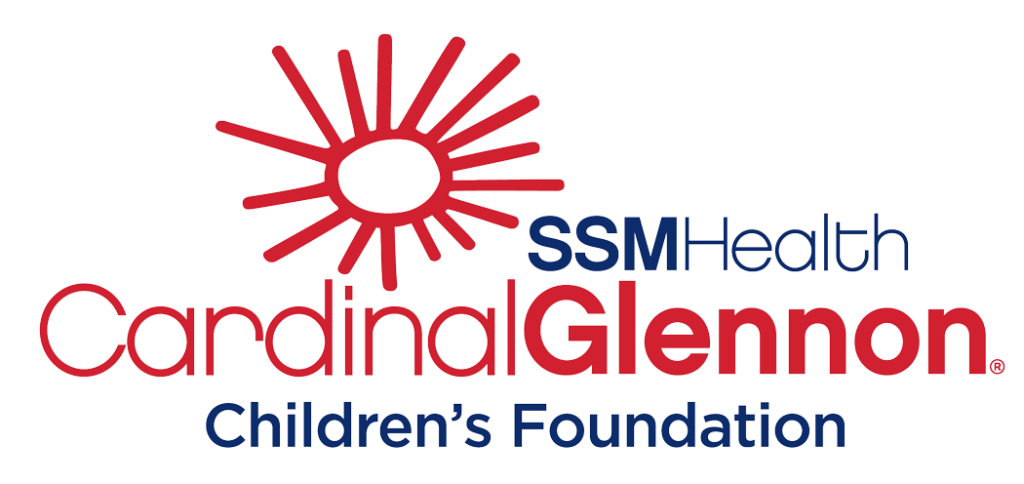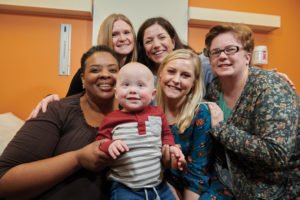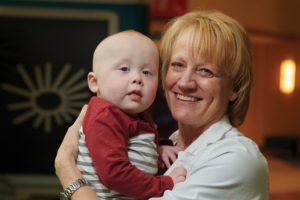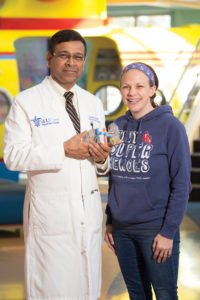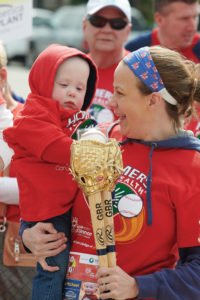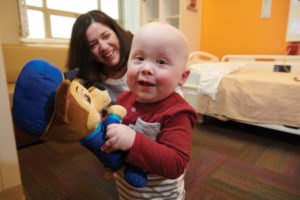Our Patients:
Michael Loness
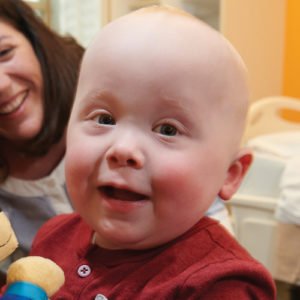
Michael’s Superhero It was early in the morning so few people — or germs — were passing through the hospital’s atrium. Sarah Loness unbuckled Michael from his stroller and placed his feet on the floor. Spotting the water bubble sculpture across the room, he was off in a flash. Less than a month after a kidney transplant, the 21-month-old was on the run.
Michael’s Superhero
It was early in the morning so few people — or germs — were passing through the hospital’s atrium. Sarah Loness unbuckled Michael from his stroller and placed his feet on the floor. Spotting the water bubble sculpture across the room, he was off in a flash. Less than a month after a kidney transplant, the 21-month-old was on the run.
Michael was the first child for Sarah and husband Shawn. At the 28th week of the pregnancy, doctors discovered that Sarah had too little amniotic fluid, indicating that Michael’s kidneys were not developing. That often results in inadequate lung development, too. “We didn’t know if he would be able to breathe when he was born,” Sarah says. “They prepared us for the worst-case scenario.”
Michael entered the world with normal lungs, but undeveloped kidneys and other congenital anomalies. Later testing indicated VATER association, a group of anomalies that arise from unknown errors early in fetal development. Michael underwent surgery two days after he was born, the first of 11 during his first 20 months. He wore a colostomy bag for 15 months. His long-term outcome would depend upon kidney dialysis and a transplant. The kidneys filter blood then dispose of wastes and extra fluids by producing urine. They also produce important hormones.
Prologue
Michael’s care depended upon developments decades in the making. Construction began in 1954 on what was known as Cardinal Glennon Memorial Hospital for Children. On December 24 of that year the first kidney transplant was performed in Boston between identical, 23-year-old twins. Most people are born with two kidneys but can live well with one. The recipient’s immune system accepted his twin’s kidney. Organ transplantation still languished as a treatment option because the body views non-identical tissues as invaders that should be rejected like germs.
By the early 1980s drugs had been discovered to suppress the immune system and protect transplants. It nonetheless was difficult to maintain babies on dialysis, which filters body wastes, until they grew large enough to accept a donated kidney. Ellen Wood, MD, arrived at SSM Health Cardinal Glennon Children’s Hospital in 1983 and would become its long-time director of nephrology. “The transplant program here was approved in 1982 and they did several teenagers that year,” she says. That era’s dialysis machines could not handle the small fluid volumes required for infant care, says Wood, a professor of pediatrics at Saint Louis University School of Medicine. At most pediatric hospitals, “Babies didn’t get dialyzed. They just died. There were groups in the country who felt strongly we should try to do better. We were one of those groups.”
Nephrologists and surgeons at SSM Health Cardinal Glennon modified catheters and dialysis machines to handle a tenth of the fluid volumes they were designed to process. “The first baby we dialyzed from birth was born in 1984,” Wood says. “She was transplanted on Easter Sunday in 1985.” Wood has stayed in touch with that girl, who now is 33 years old, married and raising an adopted child. Three other babies born in the mid-80s would become part of Michael’s story in 20 years – Sarah Modde, Shawn Loness and Robyn Rosenberger. Another milestone in Michael’s story was passed in May 2017. The 3-D Printing Center of Excellence, funded by donors, was opened at SSM Health Cardinal Glennon. It creates computer-generated, three-dimensional models that assist surgeons in planning complex procedures.
Fast forward
Sarah, a social worker, and Shawn, a county sheriff’s deputy, married and gave birth on April 18, 2016, to Michael, who weighed 6 pounds and 3 ounces. He was transported to SSM Health Cardinal Glennon, where SLUCare pediatric nephrologist Anne Beck, MD, became his doctor on his first day. Optimal outcomes for kidney failure require transplants, she says. “Children have to be around 22 pounds so an adult organ can be put into them. The biggest barrier for Michael was getting him to thrive on dialysis to make it to that cutoff. Because of Dr. Wood and the seasoned nephrologists and their nursing corps, who have been doing that here since 1984, Michael made it.”
Last August, Michael joined 101,000 other people on the national kidney transplant waiting list. Only 17,000 find living or deceased donors each year. Transplant donors are matched according to HLA (human leukocyte antigen) proteins that tell the immune system whether cells are friend or foe. Half of HLAs are inherited from each parent but 70% of recipients do not have suitable donors in their families. Sarah and Shawn gave Michael his bright blue eyes but they could not give him a kidney. Mom’s blood type was incompatible and dad’s kidneys were too large.
Miss Rosenberger returns
By 2017, the child born in 1985 was Robyn Rosenberger, a married mother of three who had found her calling though a foundation that makes personalized superhero- style capes for children facing illnesses or disabilities. A television crew asked to follow her on a TinySuperheroes cape delivery. “Michael was on our waiting list. If the TV station hadn’t been doing the story I probably would have mailed his cape,” Robyn said. “While they were interviewing his mom, she said they were looking for a living donor.” Robyn still cannot explain what came over her. “I thought, ‘If all this boy needs is a new kidney and I have one, there is a simple solution.’ I didn’t say it to them, but I thought, ‘I need to see if I am a match.’”
Robyn found the Transplant Center at SSM Health Saint Louis University Hospital, which cares for children at SSM Health Cardinal Glennon. She underwent HLA testing and two months of counseling to make sure she accepted the ramifications of the donation. Robyn was approved and Michael’s second birthday arrived on January 17, 2018. Through a three-inch incision in the lower abdomen, Robyn’s left kidney was removed at SSM Health Saint Louis University Hospital and whisked next door to SSM Health Cardinal Glennon. The kidney was placed in Michael’s tummy by Chintalapati Varma, MD, transplant surgeon and associate professor at Saint Louis University School of Medicine. He planned the placement with a model of Robyn’s kidney that was generated by the 3-D Printing Center of Excellence.
“Every few weeks I would visit Michael while he was on dialysis and place the model on his abdomen to see if it would fit,” Varma says. “Finally in early January it seemed to be a good fit. If we had not had the model maybe we would have waited a little longer.” Some rearranging was needed to accommodate the kidney, he says. “We exposed and pushed the bowels away, placed the kidney and started sewing. There is an artery which supplies blood to the kidney, a vein which takes blood back to the heart and the ureter, a tube that takes urine to the bladder.” After 35 to 40 minutes the work was done. Before Michael left the operating room he made urine for the first time in his life.
Unlimited
Kidney transplants now give children life expectancies of 63 years, according to the National Kidney Foundation. Michael may benefit from future immune suppression drugs that will perform better with fewer side effects.
“He will need to take medications for the rest of his life and minimize exposures to infectious environments,” Beck says. “He will go to school and do well. It will not limit him from any physical activity as long as he has access to water.” His parents’ dedicated care will boost his life quality, Beck predicts. “He is a testament to his family’s commitment. For a child to have a colostomy and go through dialysis and have no infections is spectacular.” Sarah finds it difficult to comprehend that Michael’s life has resulted from medical care that was barely possible when she was born. “He wouldn’t have made it. Then they told parents to take their child home and love him as long as you’ve got him.”
Michael had started to walk just before his transplant. Now, mom says, “He has so much energy. He’s walking and climbing and all of that fun stuff.” When Michael visits the hospital for exams he recognizes his caregivers and readily runs into outstretched arms. “He knows exactly who everybody is,” Sarah says. “He has had all of them since the day he was born.” Michael’s care is coordinated by the hospital’s Complex Medical Care Program. “He is followed by at least five specialties. We are the liaison between them and the family,” says Aline Tanios, MD, a SLUCare pediatric hospitalist and assistant professor of pediatrics at Saint Louis University. “Michael is the busiest, cutest kid you will ever see, especially after all that he went through. He is amazing.”
